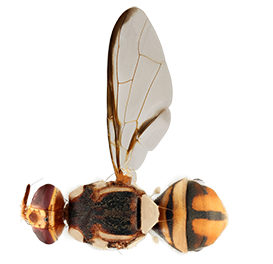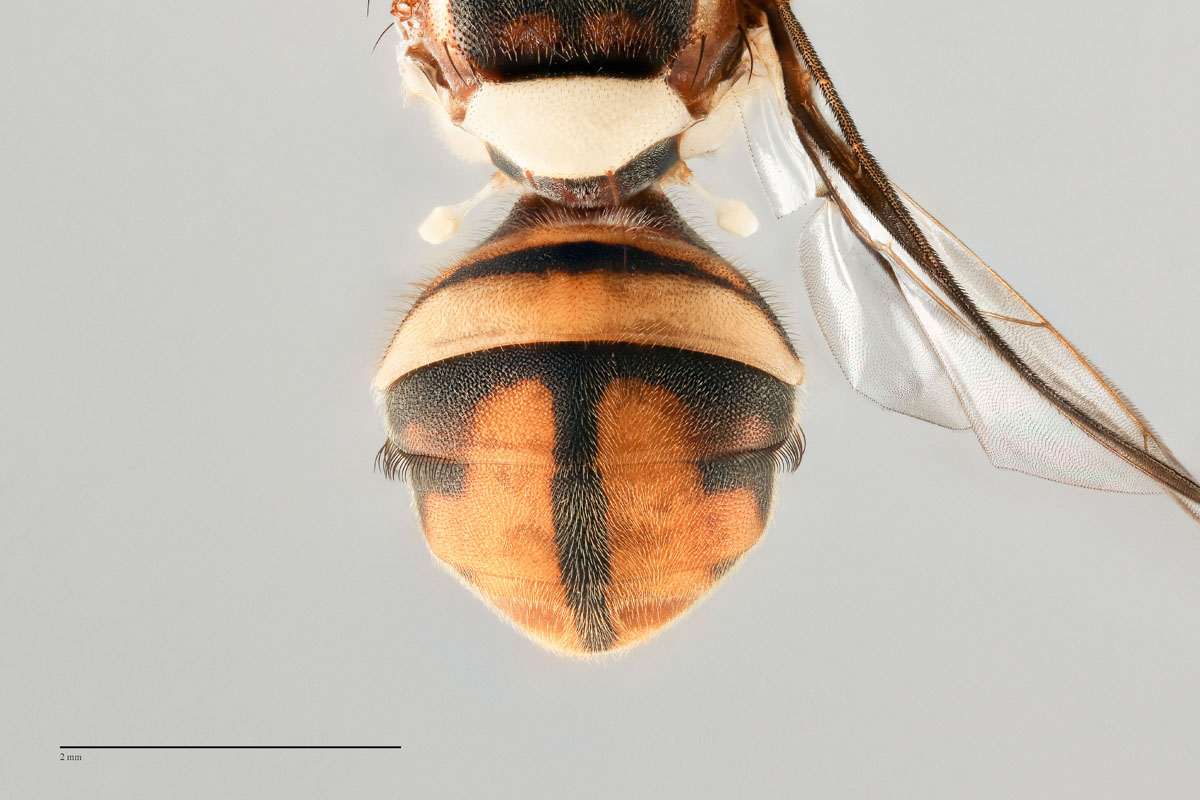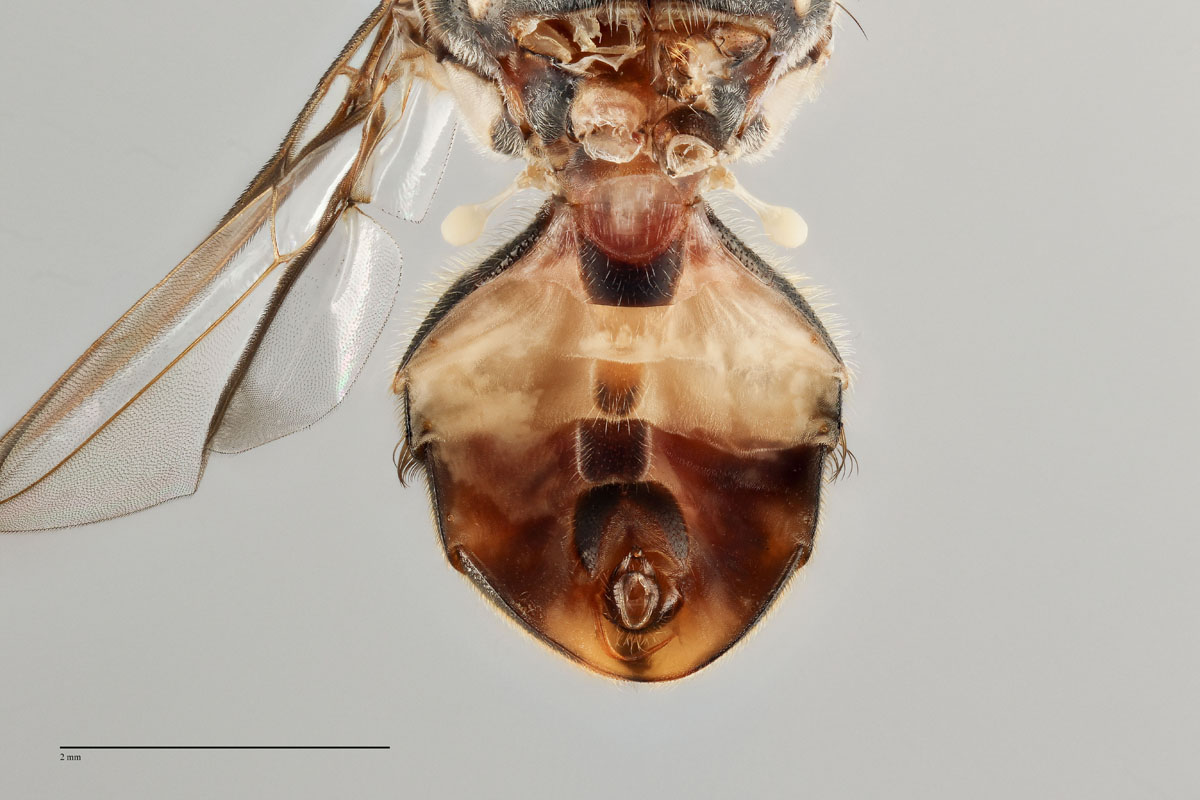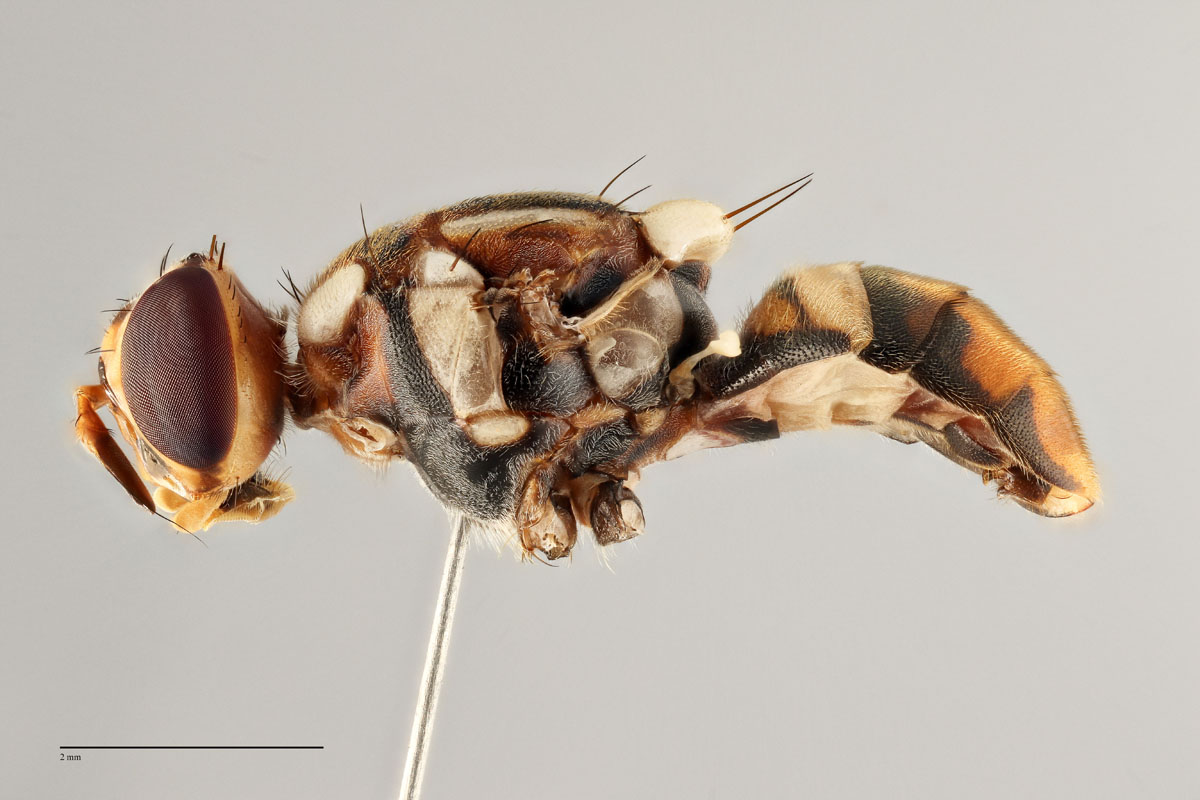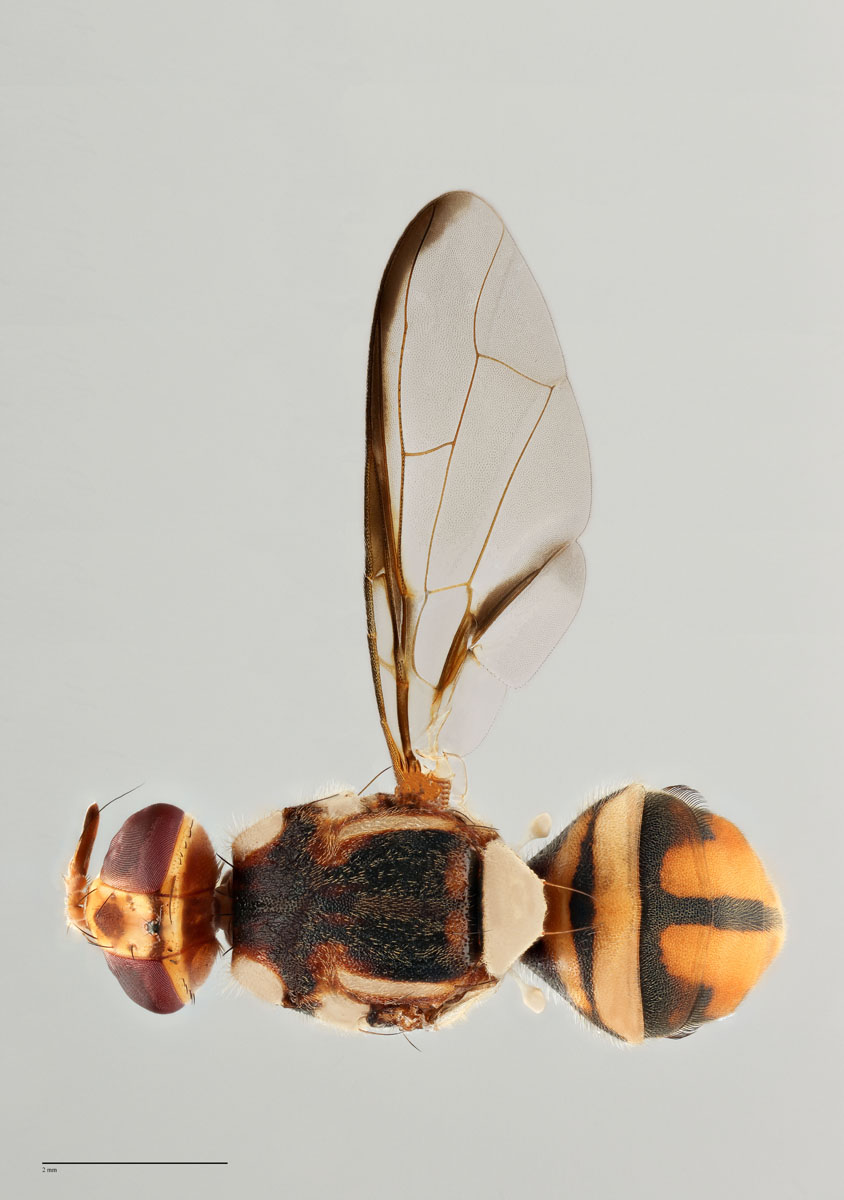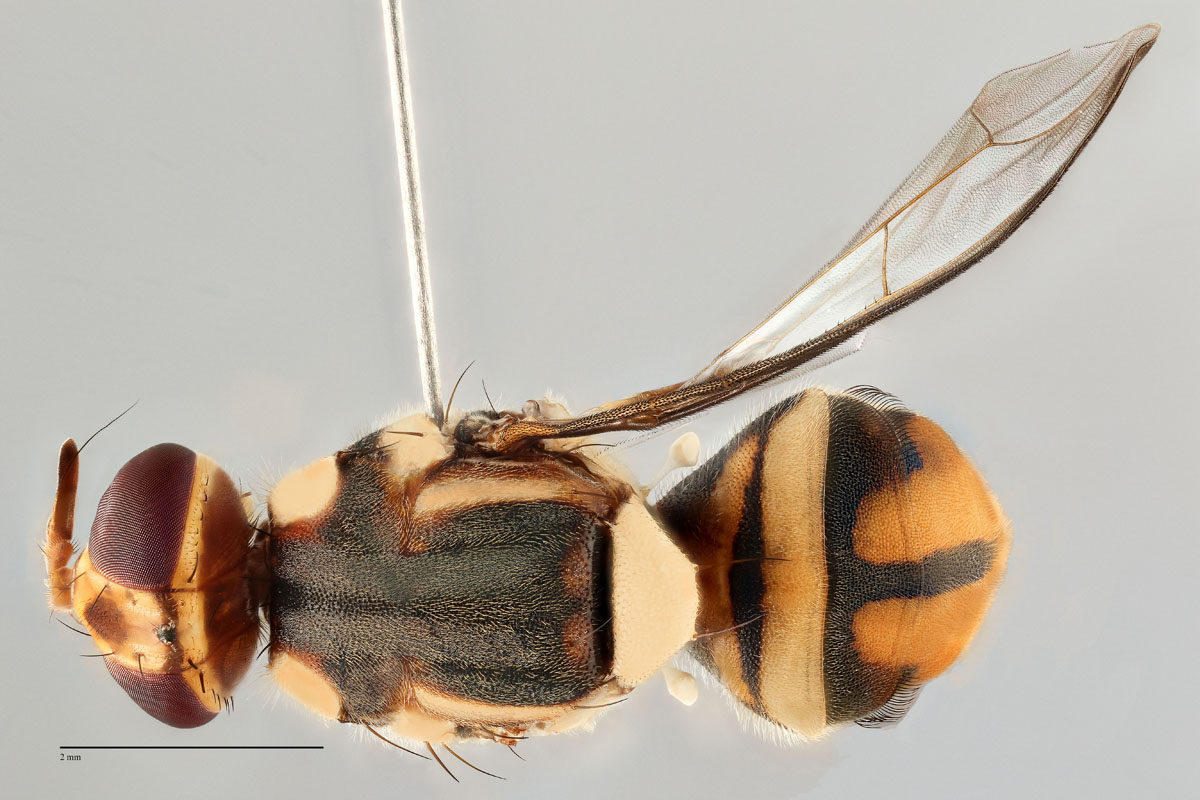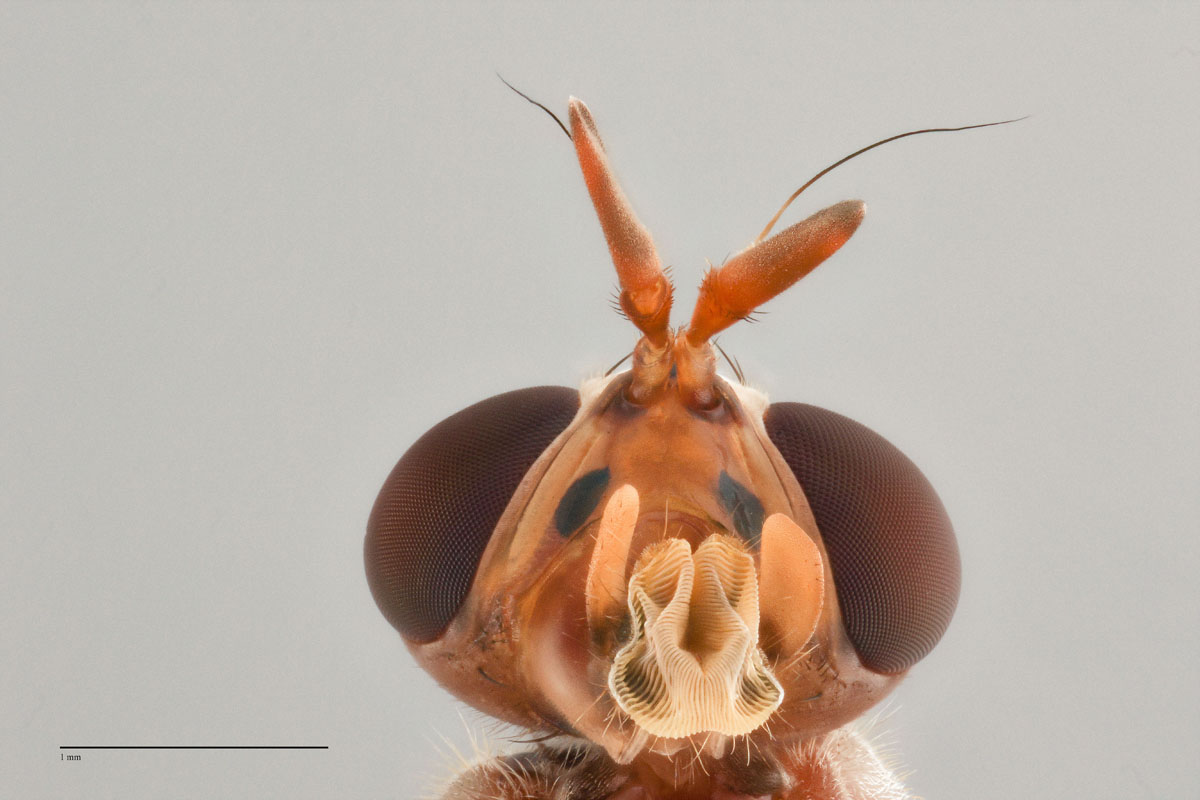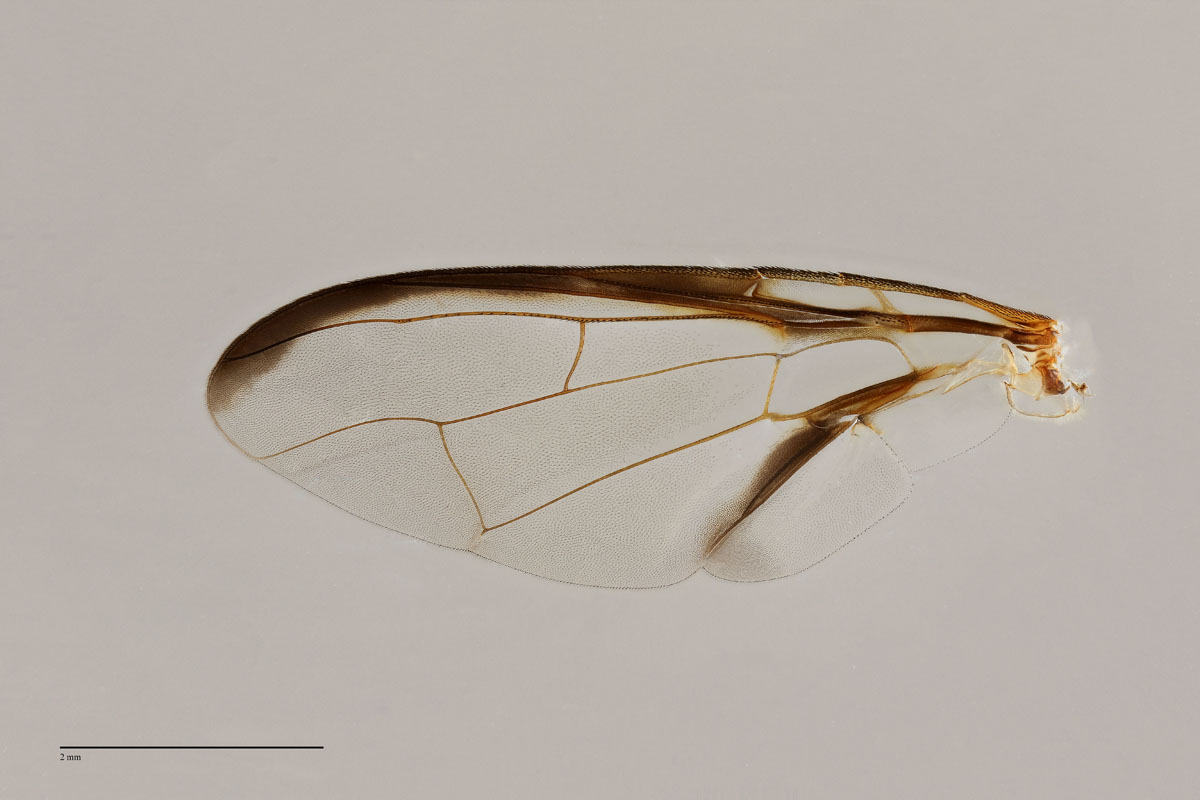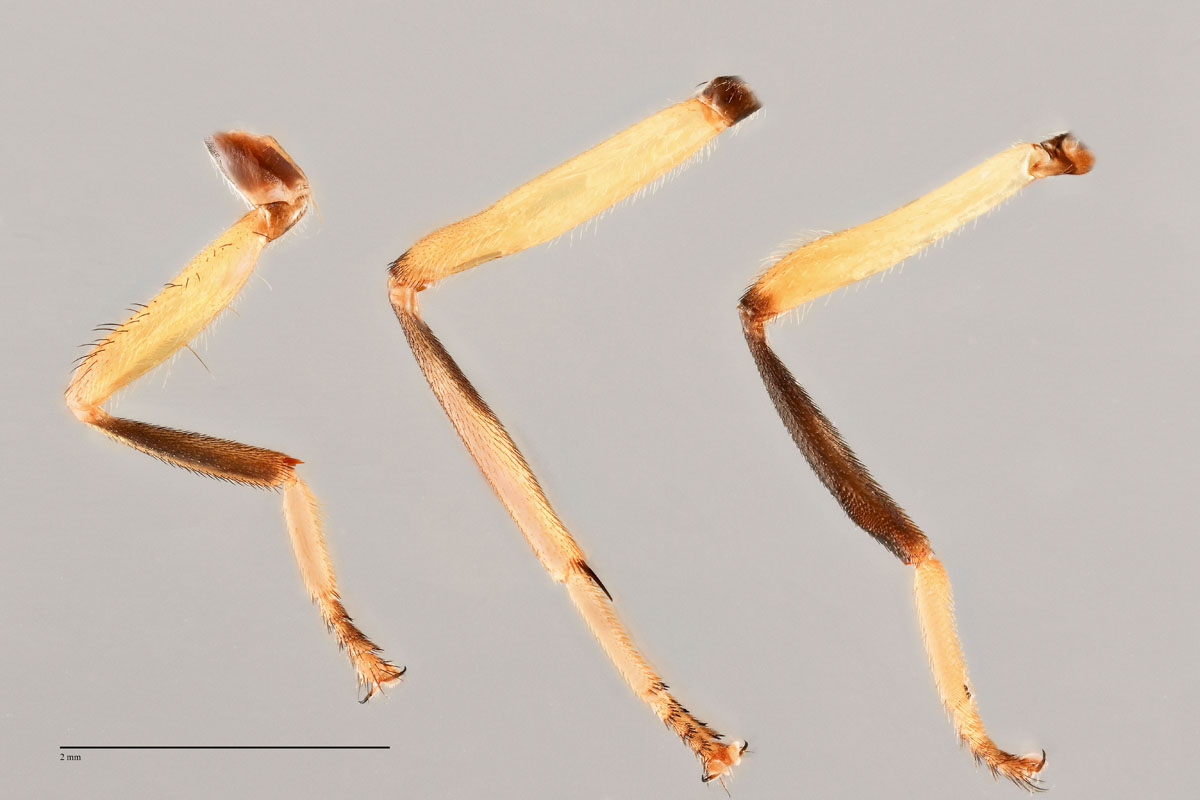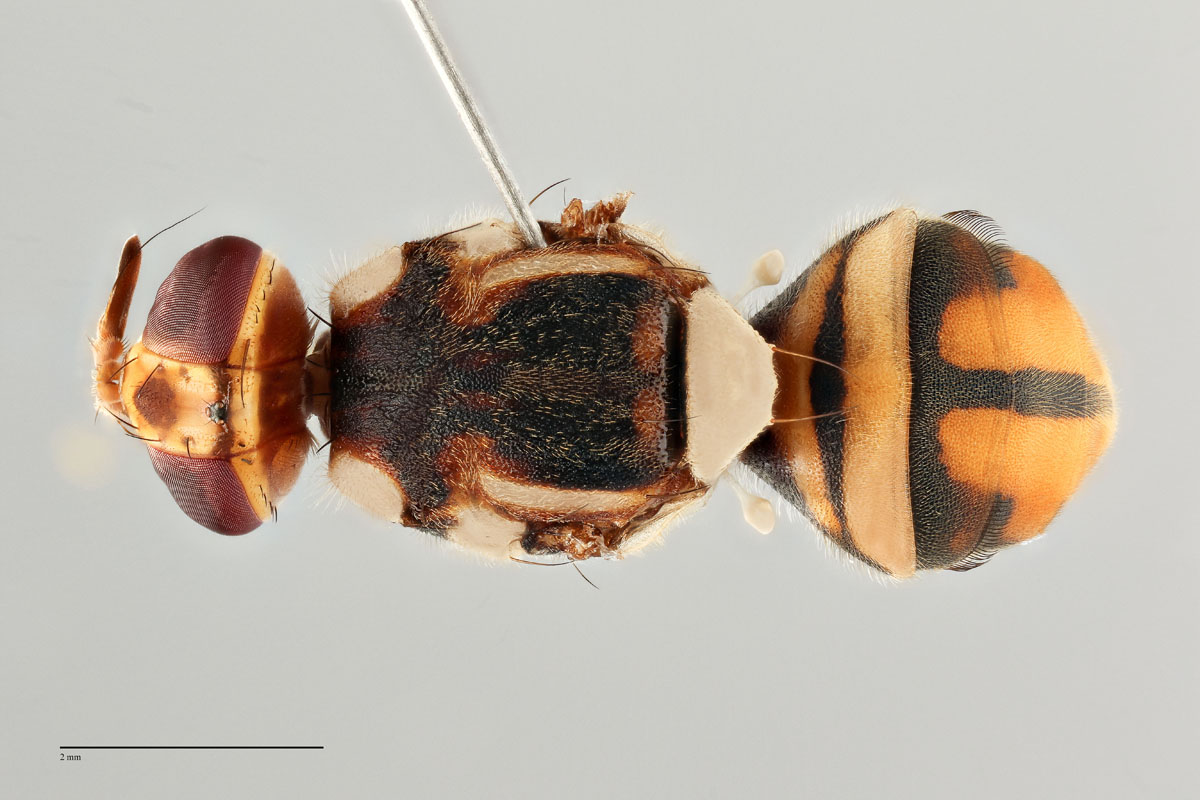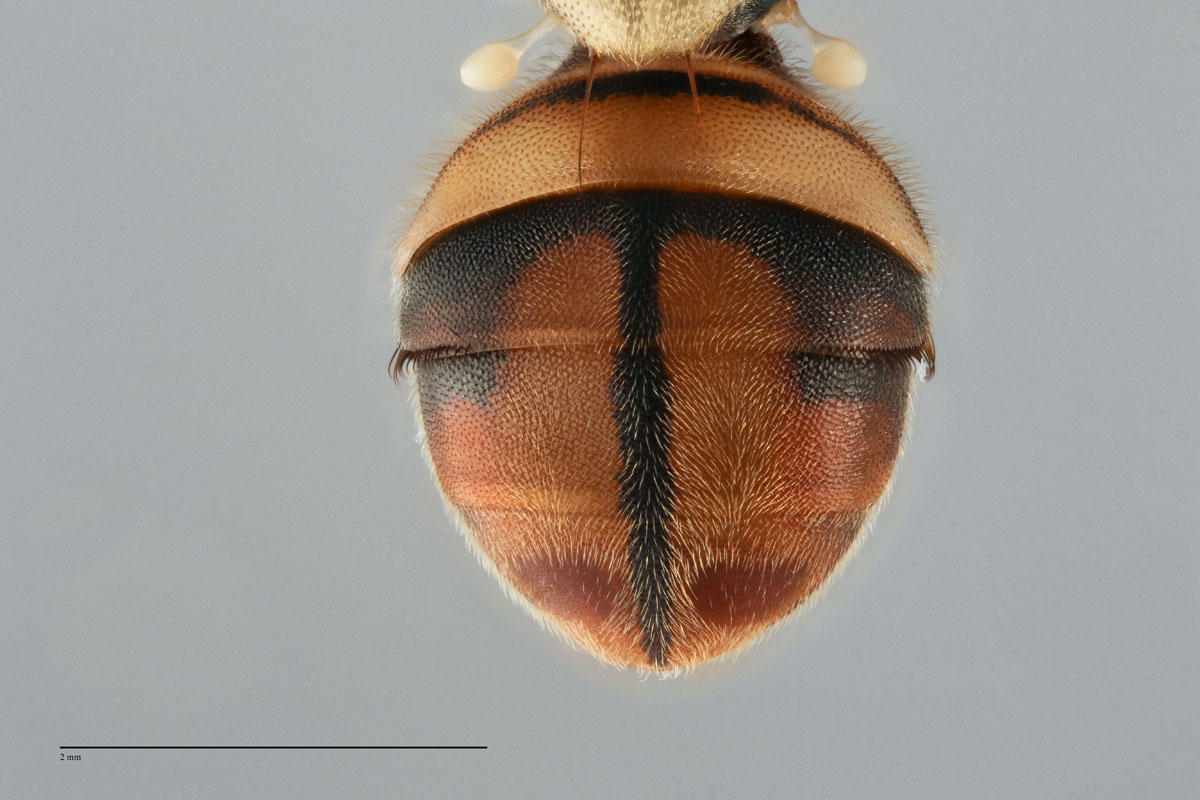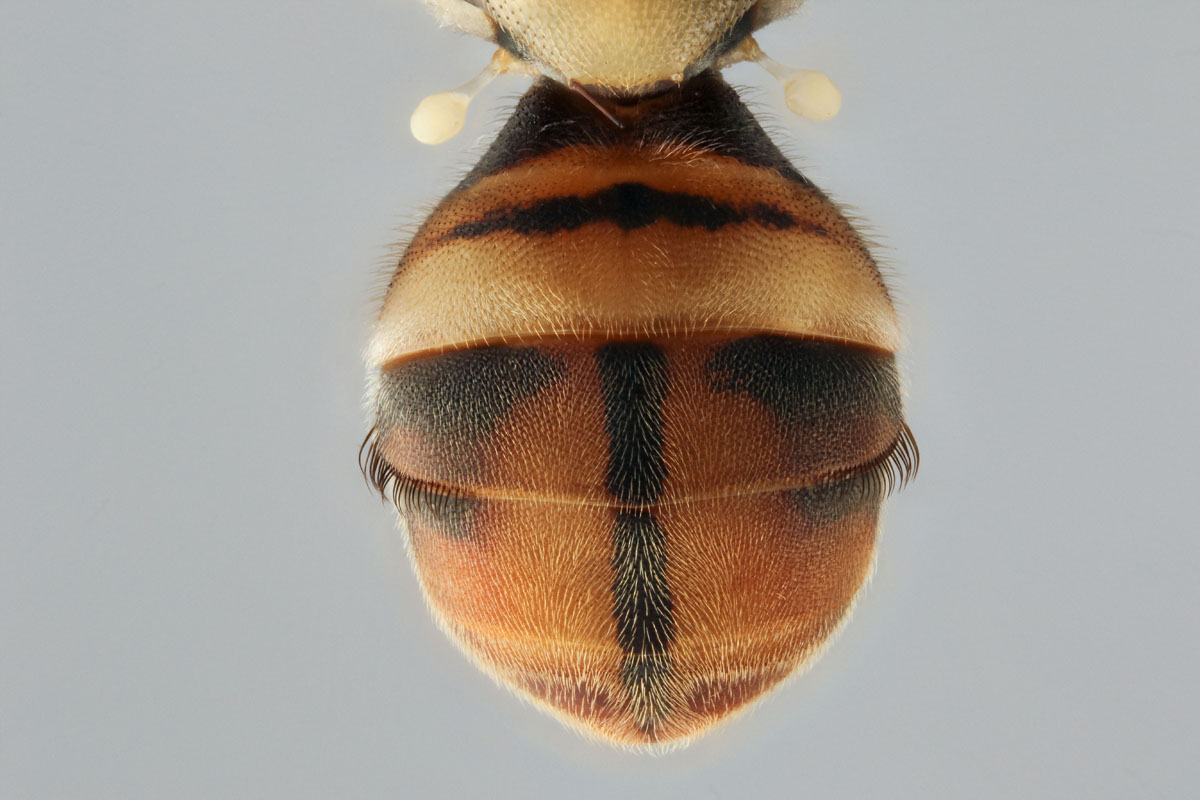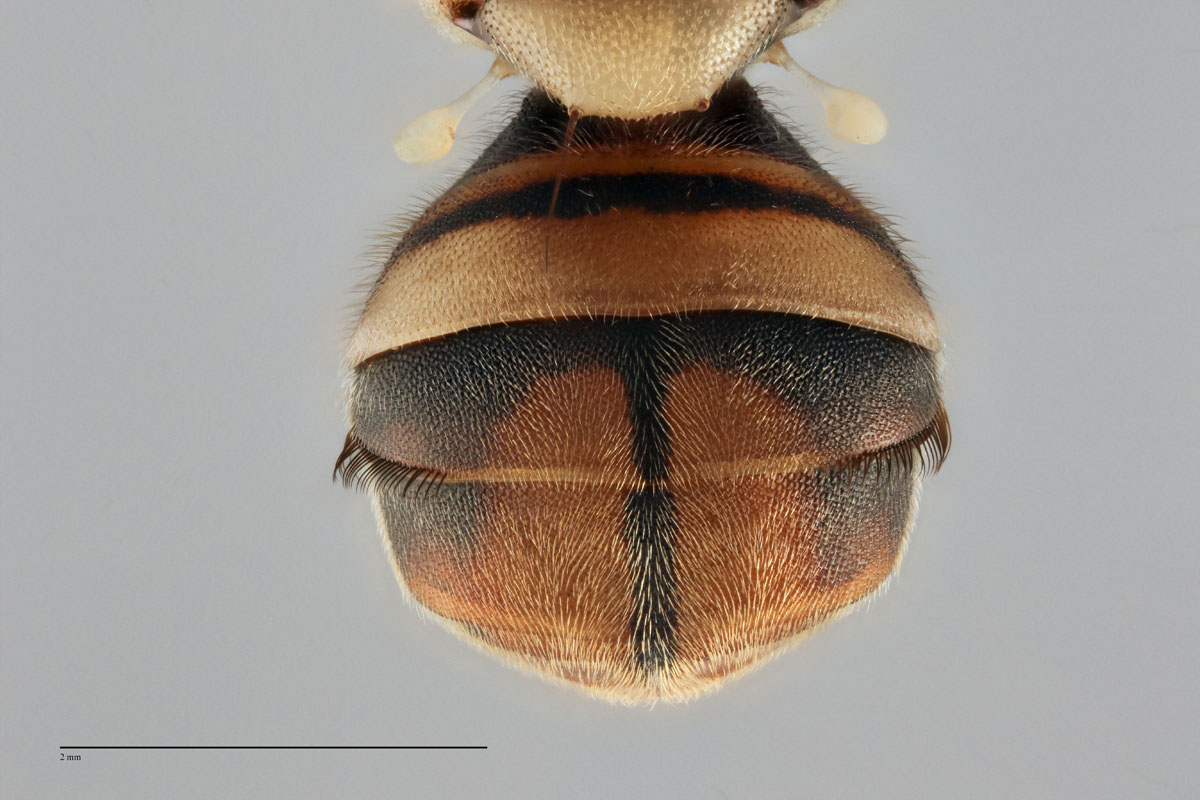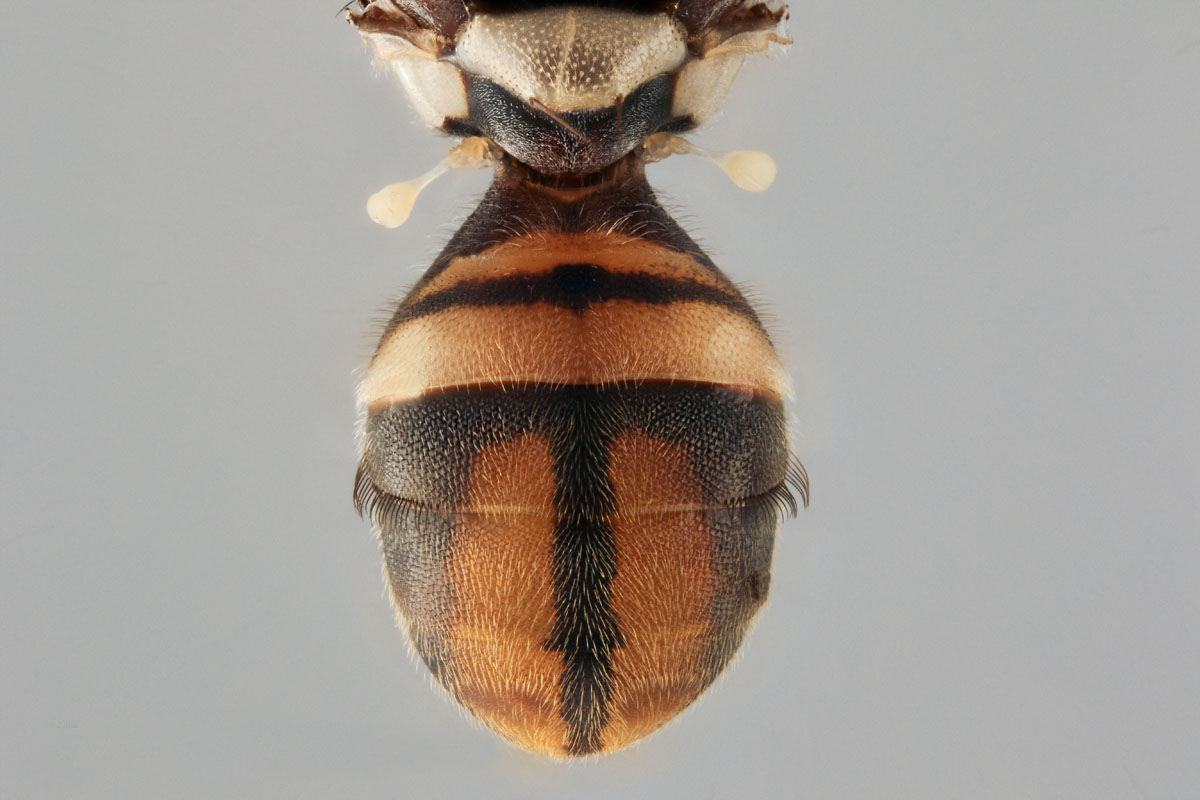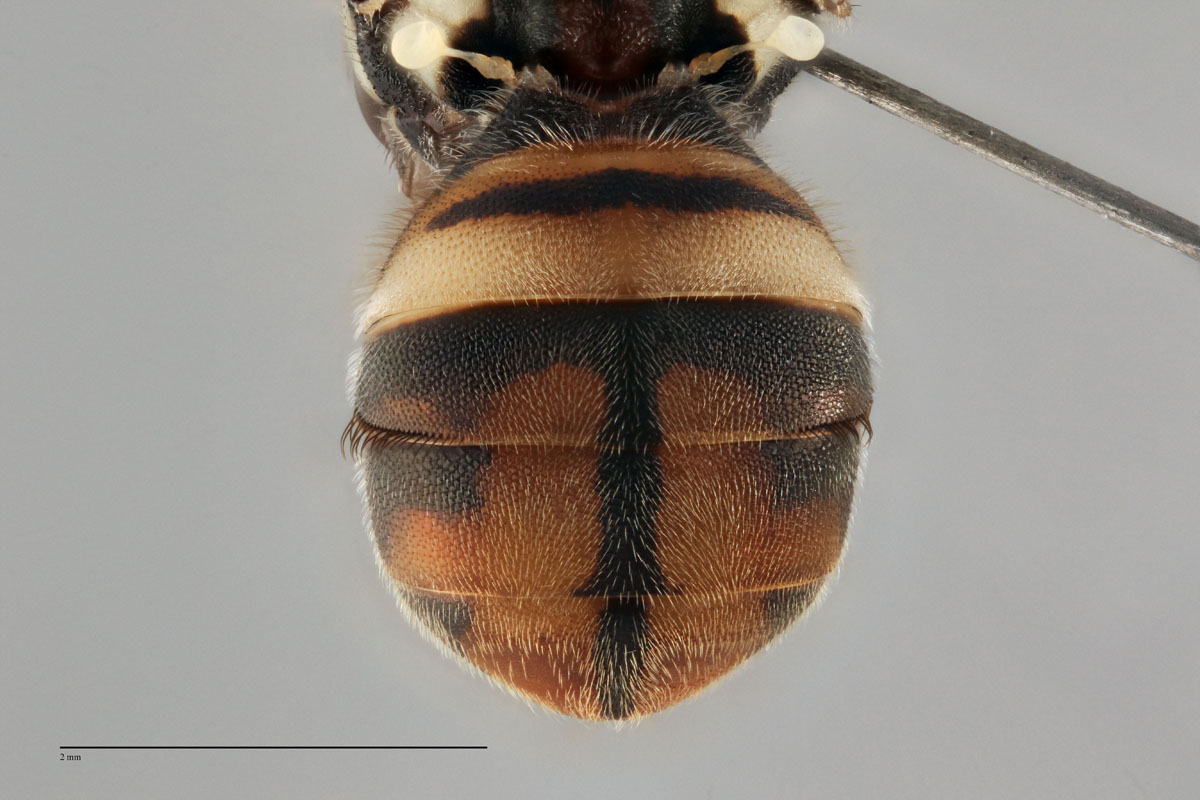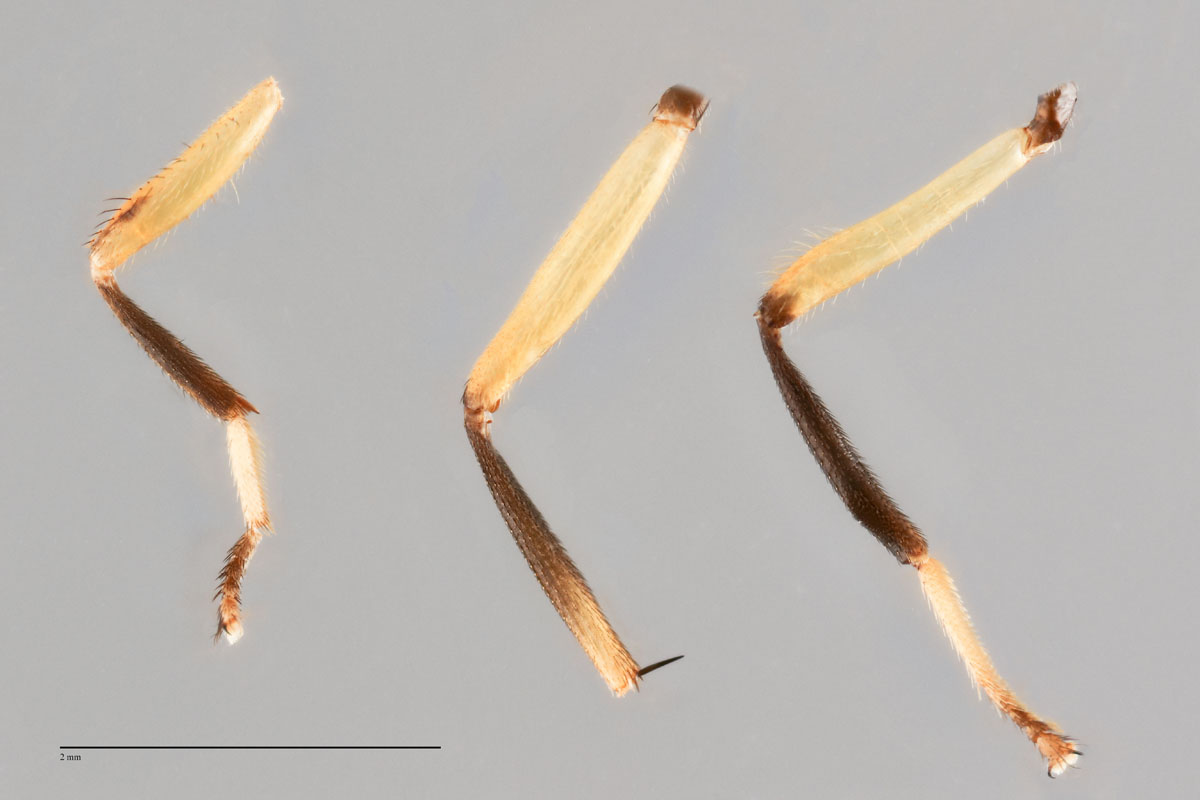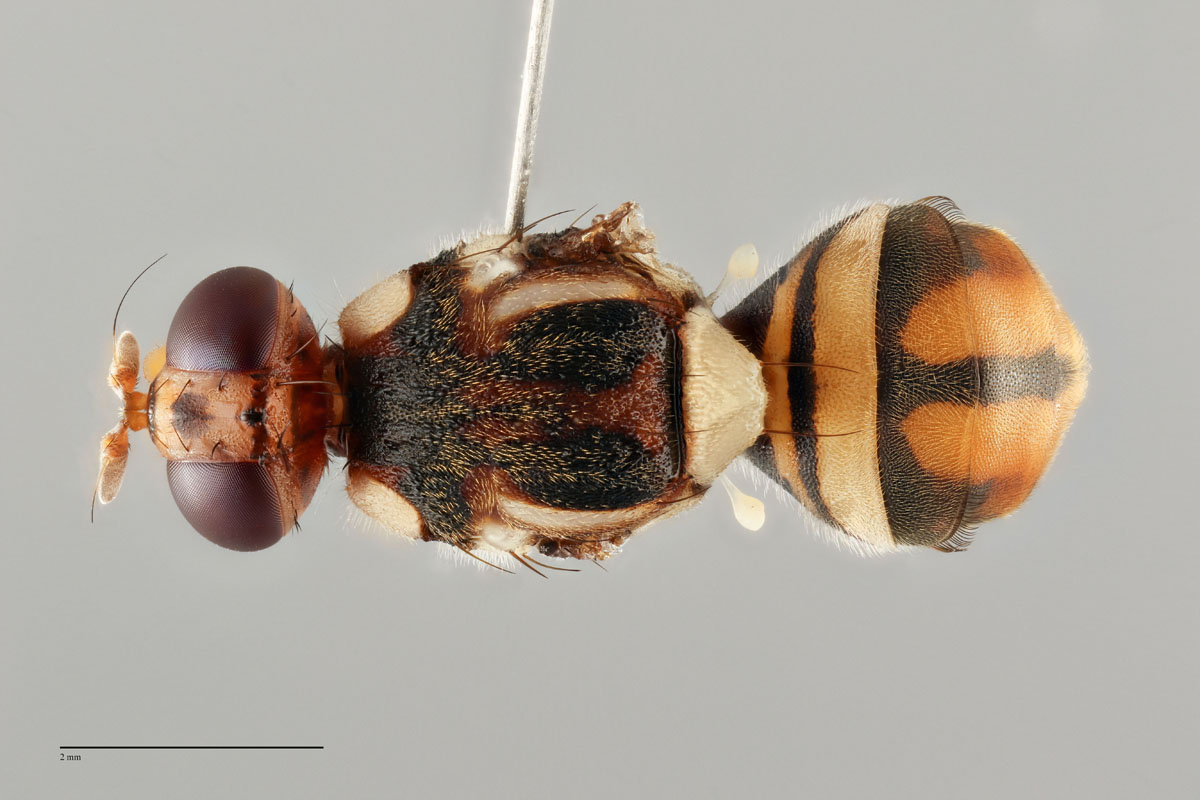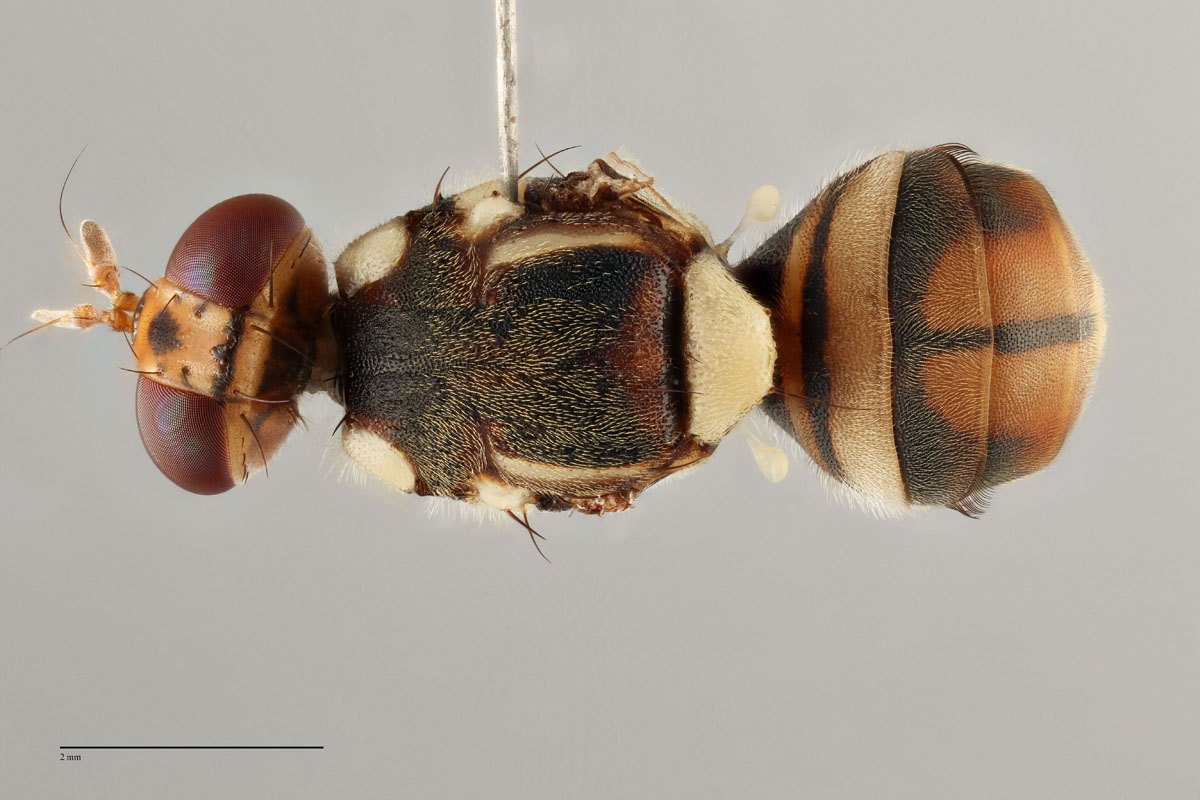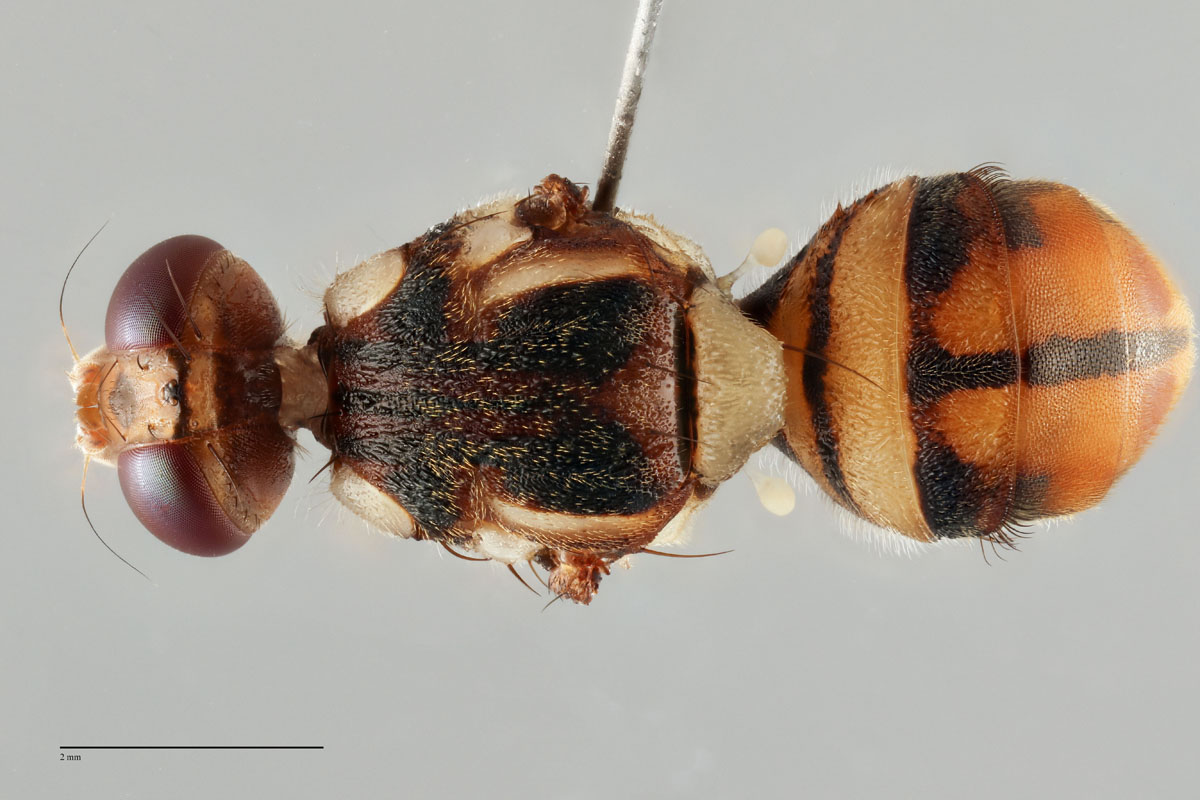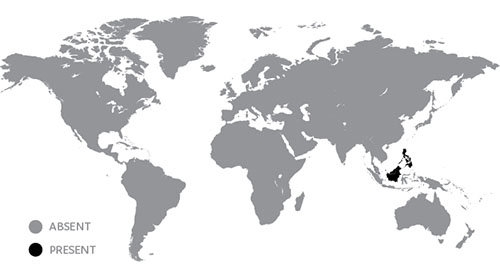Diagnosis
Morphological – adult
Features include:
- Face fulvous with a pair of large oval black spots
- scutum black except dark red-brown along posterior margin and enclosing prsc. setae, below and behind lateral postsutural vittae, around mesonotal suture, around anterior margin of notopleura and inside postpronotal lobes
- postpronotal lobes and notopleura yellow
- mesopleural stripe reaching midway between anterior margin of notopleuron and anterior npl. seta dorsally
- broad parallel sided or subparallel lateral postsutural vittae ending at ia. seta (in some specimens the vittae end behind the ia. seta)
- medial postsutural vitta absent
- scutellum yellow
- legs with femora entirely fulvous, fore tibiae pale fuscous to fuscous, mid tibiae pale fuscous to fuscous basally tending paler apically, hind tibiae fuscous
- wings with cells bc and c colourless, microtrichia in outer corner of cell c only, a narrow fuscous costal band distinctly overlapping R2+3 and widening markedly across apex of wing, a narrow fuscous anal streak
- supernumerary lobe of medium development
- abdominal terga III-V with a narrow transverse black band across anterior margin of tergum III and expanding to cover lateral margins, dark fuscous to black rectangular markings anterolaterally on tergum IV which sometimes continue to cover posterolateral margins of this tergum, dark fuscous to black anterolateral corners on tergum V, a very broad medial longitudinal black band over all three terga, a pair of oval orange-brown shining spots on tergum V
- abdominal sterna dark coloured
- posterior lobe of male surstylus short
- female with apex of aculeus needle shaped (Drew and Romig 2013).
Morphological – larvae
Not available.
Molecular
DNA barcoding
BOLD reference data available. Diagnostic to the level of the B. dorsalis species complex, but difficult to resolve amongst several other species within the complex.
See Diagnostic methods used to identify fruit flies.
COI data
B. occipitalis OCC001 Classic morphology Folmers COI
B. occipitalis OCC002 Abdomen variation Folmers COI
B. occipitalis OCC003 Abdomen/Scutum variation Folmers COI
B. occipitalis OCC004 Scutum variation Folmers COI
B. occipitalis OCC005 Scutum variation Folmers COI
B. occipitalis OCC006 Abdomen/Leg variation Folmers COI
B. occipitalis OCC007 Abdomen variation Folmers COI
B. occipitalis OCC008 Abdomen variation Folmers COI
DDOSTs2 data
B. occipitalis OCC001 Classic morphology DDOSTs2
B. occipitalis OCC004 Scutum variation DDOSTs2
EIF3L data
B. occipitalis OCC001 Classic specimen EIF3L
B. occipitalis OCC004 Scutum variation EIF3L
B. occipitalis OCC008 Abdomen variation EIF3L
RPA2 data
B. occipitalis OCC001 Classic morphology RPA2
B. occipitalis OCC004 Scutum variation RPA2
PCR-RFLP Test 1
BsrI: Data not available
HinfI: Data not available
HhaI: Data not available
Sau3AI: Data not available
SnaBI: Data not available
SspI: Data not available
Vspl: Data not available
PCR-RFLP Test 2
Data not available
